Opinion
‘Uncharted Waters’: Navigating the Impending Global Water Crisis
The drilling industry has a very important role to play in the water shortage crisis.
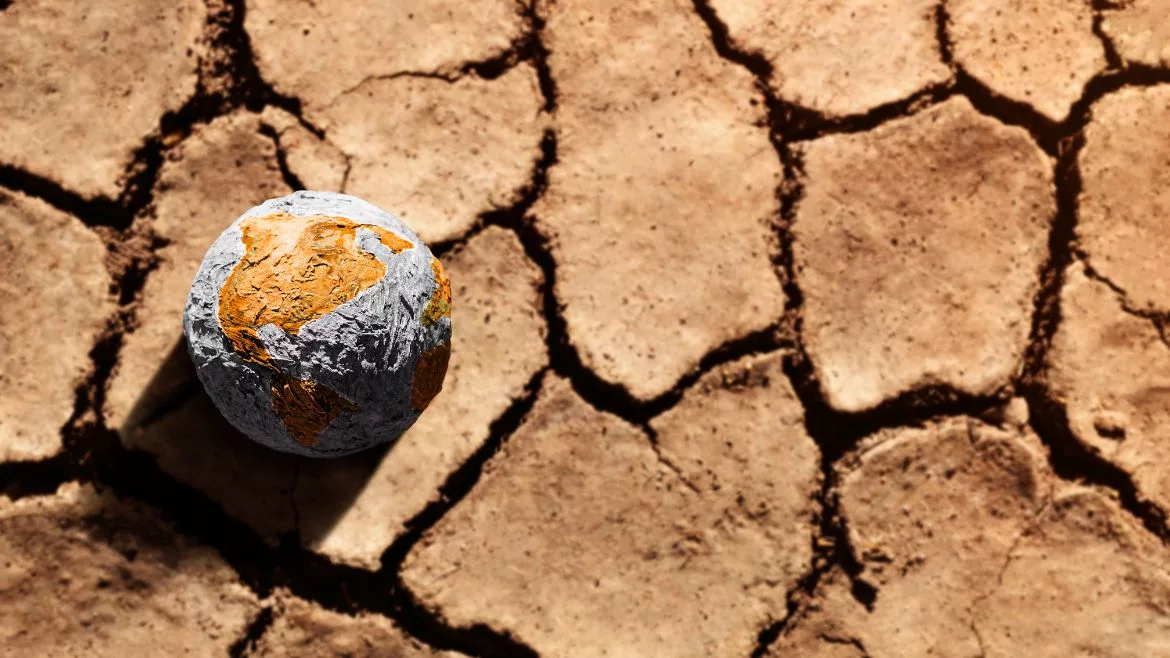
As we stand on the brink of a new dawn not just for the drilling industry but our society in general, the world faces an unprecedented challenge that threatens the very essence of daily life: a surging global demand for water.
According to a United Nations World Water Development Report, global water demand is projected to increase by a staggering 20% to 25% by 2050. This surge is not just a number; it represents a complex web of increased agricultural needs, industrial activities, and domestic consumption accompanying population growth and economic development.
The impact of this burgeoning demand is unevenly distributed across the globe, with certain regions bearing a disproportionate burden. Among those, the Middle East and North Africa (MENA) stand out as harbingers of the acute crises that lay ahead. The MENA region, characterized by its arid climate and political complexities, is on a fast track to facing extreme water stress. The World Resources Institute (WRI) categorizes "extremely high water stress" as regions using more than 80% of their available water supply annually. Based on these metrics, the MENA region is predicted to have 100% of its population living under conditions of extreme water stress by 2050.
These numbers are more than a forecast; they are a clarion call for immediate action. Water scarcity in these areas transcends environmental concerns, seeping into socio-economic stability and political tensions. Iran’s decades-long struggle with water management inefficiencies and unsustainable agricultural practices has already sparked widespread protests—a scenario likely to be replicated in other parts of MENA as water stress intensifies.
This dire outlook sets the stage for a deep dive into the global water crisis. Understanding its implications, unraveling the role of the drilling industry in mitigating these challenges, and exploring the pathways through which governments can contribute to sustainable solutions are crucial steps toward securing a water-secure future for the next generations. As we embark on this exploration, it is essential to remember that water, the source of all life, could become the pivot on which the fate of human civilizations turns in the 21st century.
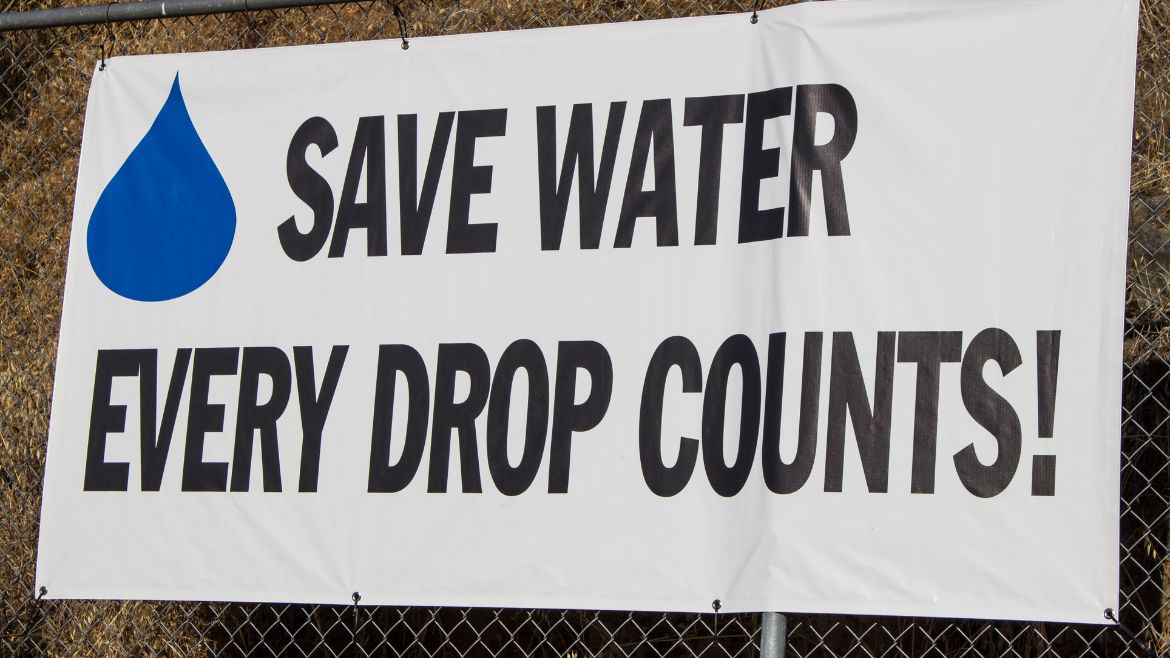 Credit: Getty Images
Credit: Getty ImagesThe Global Scenario
The looming water crisis is a specter that haunts the entire globe, with its impact varying from region to region but sparing no corner of the world entirely. The World Resources Institute (WRI) provides a grim prognosis through its Aqueduct Water Risk Atlas, detailing the intricate dynamics of water stress across different countries. According to the WRI, water stress is a multifaceted issue, influenced by both demand-side pressures from agriculture, industry, and domestic use, and supply-side challenges exacerbated by climate change and unsustainable water management practices.
As of the latest assessments, WRI’s Aqueduct database paints a stark picture: 25 countries, home to one-quarter of the world’s population, are currently grappling with "extremely high" water stress, defined as using more than 80% of their available water supply each year. This dire situation places countries at severe risk of running dry in times of drought and underscores the urgency for sustainable water management solutions.
Among the countries teetering on the edge of severe water scarcity, Bahrain, Qatar, Kuwait, Saudi Arabia, and the United Arab Emirates are notable. These nations, primarily located in the arid zones of the Middle East, are emblematic of the challenges faced by water-stressed regions. Their reliance on non-renewable groundwater and desalination projects speaks to the acute nature of their water crises and the unsustainable practices that often accompany attempts to secure water in desert climates.
In contrast, regions such as Sub-Saharan Africa, while not currently experiencing the same levels of water stress as the Middle East, are on a trajectory that could lead to significant water scarcity due to rapid population growth and increasing agricultural demands. The WRI’s projections suggest that without substantial changes in water usage and management, several African countries could face severe water stress in the coming decades.
Case Studies of Countries Facing Water Scarcity
India stands as a poignant example of a nation wrestling with the dual challenges of rising water demand and diminishing supplies. The country's extensive agricultural sector, coupled with a burgeoning population, has placed immense pressure on its water resources. Regions like Chennai have already faced "Day Zero" scenarios, where taps ran dry, and water had to be trucked in to meet the city's basic needs.
South Africa, particularly its city of Cape Town, has gained international attention for its water scarcity issues. In 2018, Cape Town narrowly averted its own "Day Zero," thanks to aggressive water conservation measures and timely rains. However, the crisis highlighted the broader challenges that South Africa faces regarding water management and climate change.
Mexico, especially its capital, Mexico City, is confronting severe water stress due to over-extraction of groundwater, leakage in water distribution systems, and pollution. The city's water scarcity issues are compounded by its geographic location, situated in a valley with limited access to fresh water sources.
These examples underscore a critical reality: water scarcity is not merely an environmental issue but a complex crisis that intersects with food security, economic stability, and social equity. As the global scenario continues to evolve, the drilling industry, alongside governments and communities, must play a pivotal role in developing and implementing solutions that address the root causes of water stress and pave the way for a sustainable water future.
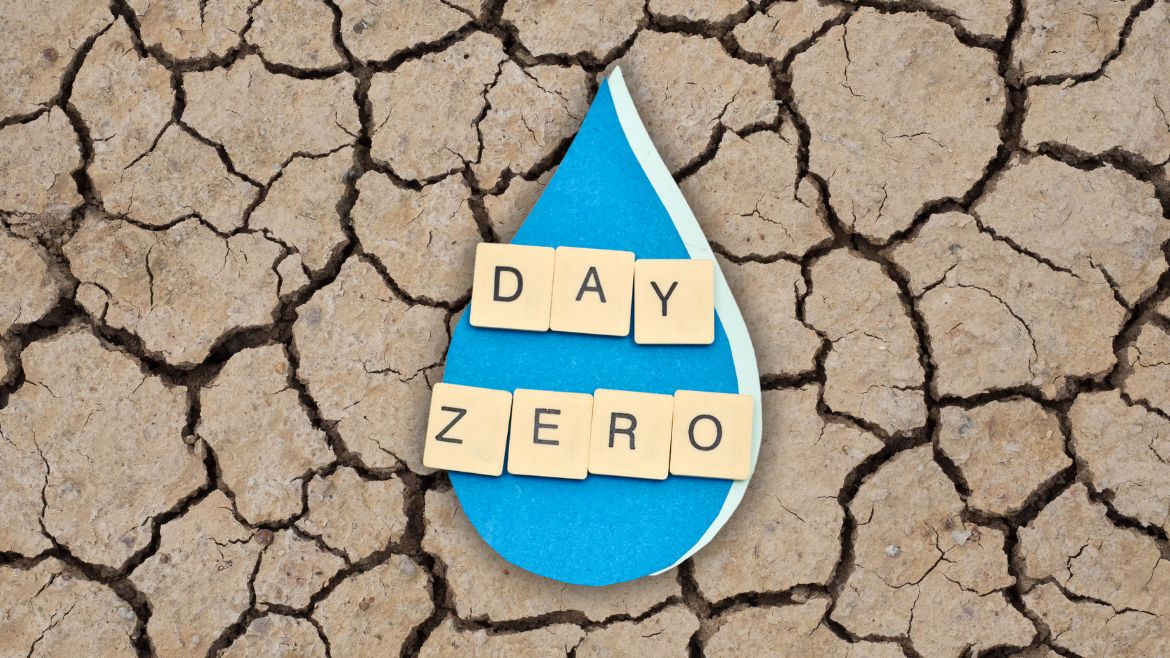 Credit: Canva Pro
Credit: Canva ProDay Zero: A Looming Reality
"Day Zero" has emerged as a stark, almost apocalyptic term in the discourse on global water scarcity. It marks the foreboding day when a city's water supply is so critically depleted that the public taps are shut off, and water rationing begins in earnest. This dire milestone is not merely a hypothetical scenario but a looming reality for several regions across the globe, underscored by rising demand, dwindling supplies, and the exacerbating effects of climate change.
Cape Town's Water Crisis: A Global Wake-Up Call
The case of Cape Town, South Africa, serves as a cautionary tale and a beacon of hope for cities on the brink of their own Day Zero. In 2018, Cape Town found itself mere weeks away from becoming the first major city in the modern era to run out of water. Years of drought, coupled with population growth and insufficient water management policies, had brought the city's water reserves to their knees.
The prospect of Day Zero catalyzed a city-wide effort to slash water consumption. From instituting stringent water restrictions to investing in water-efficient technologies and infrastructure, Cape Town rallied its citizens and stakeholders to combat the crisis. Through collective action, including reducing individual water use to just 50 liters per day and innovative water-saving measures, the city managed to push back the countdown to Day Zero and gradually replenish its water reserves. Cape Town's ordeal highlighted the necessity of proactive water management and the potential of community resilience in the face of environmental crises.
The Psychological and Social Impact of Day Zero
The specter of Day Zero carries profound psychological and social implications for communities. The anxiety and uncertainty surrounding the loss of a resource as fundamental as water can exacerbate social tensions lead to economic instability, and prompt migrations in search of more secure living conditions. In Cape Town, the crisis laid bare the disparities in water access, with wealthier residents able to secure private water supplies while poorer communities faced greater hardships.
The collective psyche of a community approaching Day Zero oscillates between despair and determination. The shared challenge of averting a water catastrophe can foster a sense of community solidarity and innovation but also highlight existing inequities and governance challenges. The experience of Cape Town underscores the need for inclusive, transparent decision-making processes that ensure equitable access to water and foster community engagement in water conservation efforts.
As cities and regions around the world confront their own vulnerabilities to water scarcity, the lessons learned from Cape Town's near-miss with Day Zero offer valuable insights into preparing for and preventing such crises. The path to water security is multifaceted, involving sustainable management practices, investment in resilient infrastructure, and the promotion of a water-conscious culture among citizens and industries alike.
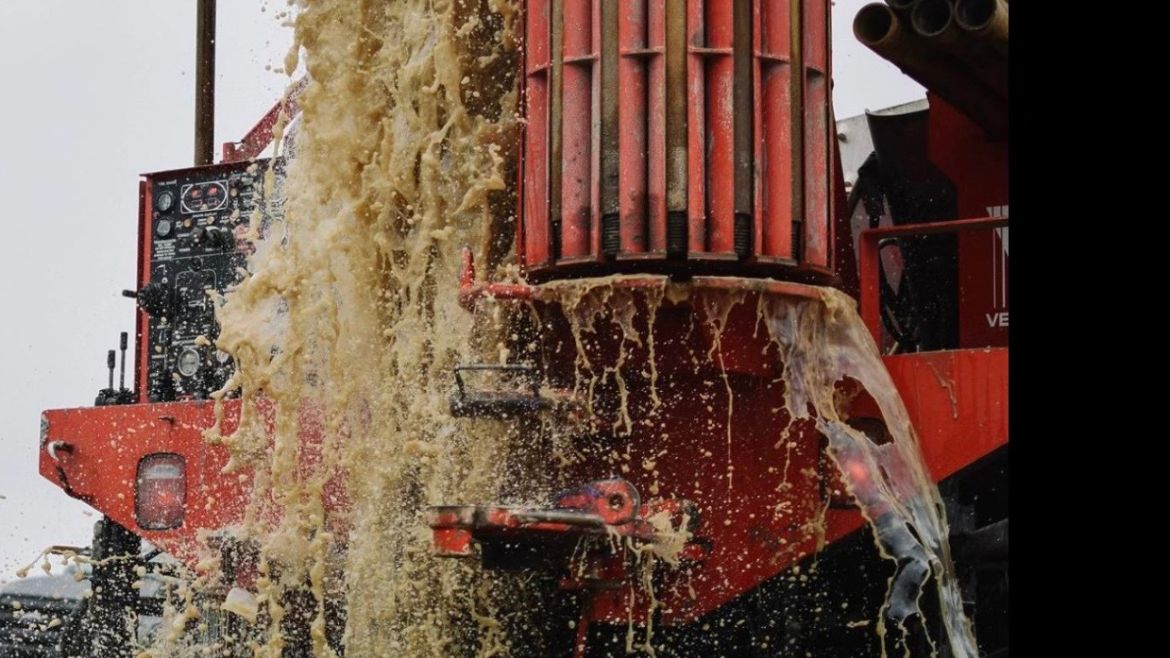 Credit: Brock Yordy
Credit: Brock YordyThe Critical Role of the Drilling Industry
In an era where crises like "Day Zero" loom large over communities worldwide, the drilling industry finds itself at the forefront of a crucial battle: to access, manage, and sustainably utilize one of humanity's most precious resources—groundwater. As the global water demand surges and the threat of water scarcity intensifies, the expertise of drilling professionals has never been more vital.
Sustainable Access and Management of Groundwater Resources
Groundwater, hidden beneath the earth's surface in aquifers, serves as a lifeline for billions around the globe. Its sustainable management is paramount in ensuring water security for future generations. Drilling professionals, with their technical expertise and understanding of the subsurface environment, play a pivotal role in accessing these hidden reserves. They are not merely technicians but stewards of an unseen resource, tasked with the delicate balance of extraction and conservation.
The sustainable management of groundwater begins with the precise assessment of aquifers—understanding their capacity, recharge rates, and the ecological balance that depends on them. Modern drilling operations, equipped with advanced geological mapping tools and data analytics, can pinpoint water sources with minimal environmental disruption, ensuring that access to groundwater is both efficient and sustainable.
Innovative Drilling Technologies and Water Conservation
The drilling industry's innovation lies not just in accessing groundwater but doing so in a way that minimizes wastage and environmental impact. Technologies like directional drilling, which allows for the precise placement of wells, and aquifer storage and recovery (ASR), which enables the replenishment of groundwater during surplus periods, are revolutionizing the way we think about water management.
Moreover, the development of low-impact drilling techniques minimizes the ecological footprint of drilling activities, preserving the integrity of aquifers and surrounding ecosystems. These technological advancements are not merely technical triumphs but are essential tools in the global effort to combat water scarcity.
The Driller's Advocacy for Sustainable Practices
Publications like The Driller play a critical role in this endeavor, not only by spotlighting the latest technological advancements and best practices in the drilling industry but also by fostering a culture of sustainability within the community. Through in-depth articles, case studies, and industry news, The Driller educates and inspires drilling professionals to adopt and advocate for water conservation techniques and sustainable practices.
The Driller serves as a platform for knowledge exchange, where professionals from around the globe can share insights, challenges, and successes. It's a testament to the drilling industry's commitment to not just the extraction of groundwater but its stewardship for future generations.
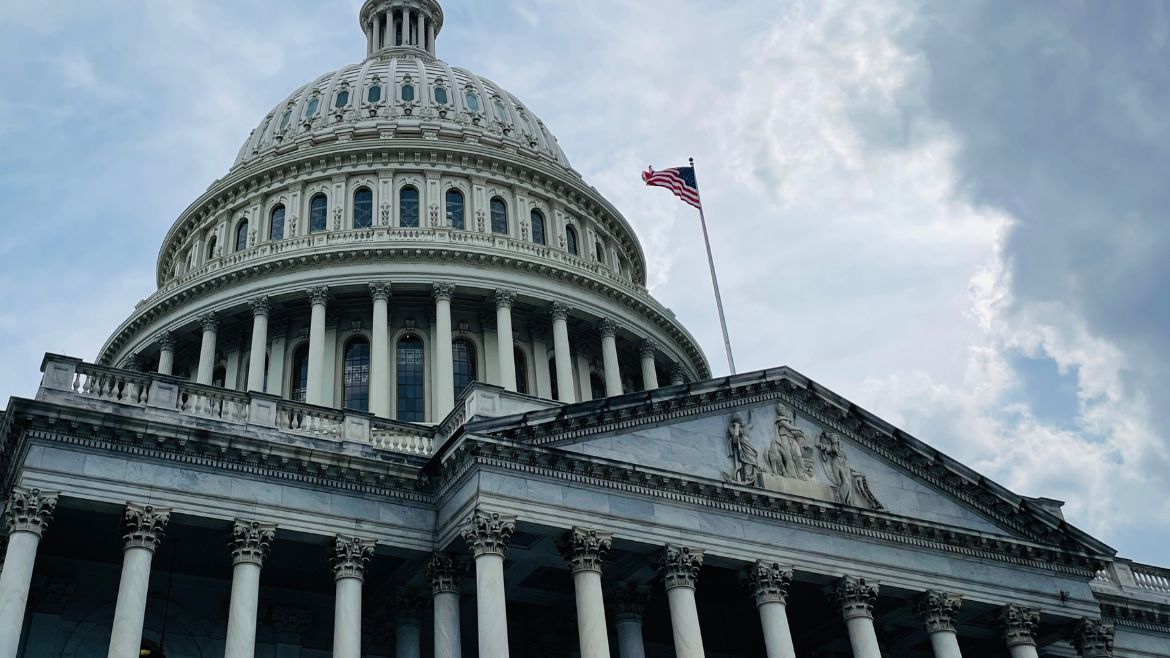 Credit: Getty Images
Credit: Getty ImagesGovernment's Pivotal Role
As global water stress reaches unprecedented levels, the role of government policies in shaping the future of water sustainability cannot be overstated. In the United States, where water scarcity is becoming an increasingly pressing issue in many regions, federal and state policies play a critical role in driving efforts toward sustainable water management and innovation.
Shaping Sustainable Futures
Government initiatives can significantly influence water conservation, distribution, and treatment practices. By implementing policies that encourage or mandate the sustainable use of water resources, governments can mitigate the impact of water scarcity. Examples of successful government-led initiatives include the Sustainable Groundwater Management Act (SGMA) in California, which aims to ensure that groundwater is managed sustainably on a local level, and the Water Infrastructure Improvements for the Nation (WIIN) Act, which provides federal support for critical water infrastructure projects across the country.
Investment in Modern Infrastructure and Technologies
The need for substantial investment in modern water infrastructure and sustainable technologies is evident. Aging infrastructure leads to significant water loss through leaks and system failures, exacerbating water scarcity issues. Governments can catalyze change by allocating funds to upgrade water delivery systems, implementing smart water management technologies, and supporting research into innovative water treatment and conservation methods. The Bipartisan Infrastructure Law, also known as the Infrastructure Investment and Jobs Act, represents a historic investment in America's infrastructure, including significant funding for water projects that will help modernize aging systems and support the adoption of sustainable water technologies.
Encouraging Public-Private Partnerships
Public-private partnerships (PPPs) can be a powerful mechanism for addressing water challenges. By collaborating with private sector entities, governments can leverage additional expertise, technology, and funding to implement large-scale water projects more efficiently. These partnerships can facilitate the deployment of innovative water management solutions, such as desalination plants, water recycling and reuse programs, and advanced irrigation technologies that reduce water consumption in agriculture.
The pivotal role of government in the battle against water scarcity underscores the need for proactive, forward-thinking policies that prioritize sustainability, innovation, and collaboration. As the global scenario of water stress continues to evolve, the actions taken by governments today will determine the water security of future generations. Through strategic investment, regulatory reform, and partnerships, governments can lead the way in securing a water-resilient future for all.
Emerging Technologies and Sustainable Practices
The drilling industry stands at the cusp of a new era, where emerging technologies and sustainable practices are beginning to redefine how groundwater resources are accessed, managed, and conserved. As we venture deeper into the 21st century, the imperative to adopt environmentally responsible drilling methods has never been greater, given the escalating global water demand and the urgent need to mitigate the adverse impacts of climate change.
Innovations Shaping Sustainable Drilling
Recent advancements in drilling technology are paving the way for more sustainable water extraction methods. Directional drilling, for instance, minimizes the environmental footprint by allowing precise targeting of water reserves, thereby reducing surface disturbance and protecting ecosystems. Moreover, the use of real-time monitoring systems in drilling operations ensures efficient water extraction by continuously assessing water quality and quantity, enabling immediate adjustments to optimize use and prevent over-extraction.
The implementation of robust and durable materials in drilling equipment extends the operational lifespan of wells, further contributing to sustainability by decreasing the frequency of drilling operations and, thus, the overall environmental impact.
Case Studies: Pioneers of Sustainable Drilling
Several regions worldwide have begun to witness the successful implementation of these innovative drilling practices. For example, a project in the arid landscapes of Namibia utilized solar-powered drilling rigs to access deep underground water sources. This not only provided a lifeline to remote communities but also showcased the potential for renewable energy to power drilling operations sustainably.
Another noteworthy initiative is the Managed Aquifer Recharge (MAR) program in Australia, where advanced drilling techniques were employed to recharge depleted aquifers during periods of surplus rainfall. This strategy has proven instrumental in enhancing groundwater availability, demonstrating how sustainable drilling practices can bolster water security in drought-prone areas.
Geothermal and Environmental Drilling: Towards a Greener Future
Geothermal drilling, which taps into the earth's heat for energy production, is another area where innovation is making strides. By providing a renewable and stable energy source, geothermal drilling reduces reliance on fossil fuels and helps combat climate change.
Similarly, environmental drilling plays a crucial role in monitoring and remediating contaminated groundwater sites. Advanced drilling techniques enable precise sampling and injection of remediation agents, illustrating the drilling industry's potential to address environmental challenges.
Legislative Support: The Case of House Bill 2131
The unanimous passage of House Bill 2131 by Washington lawmakers marks a significant legislative milestone in promoting sustainable energy practices. By allowing energy utilities to sell thermal energy via Thermal Energy Networks (TENs), the bill paves the way for neighborhood-wide decarbonization, highlighting the potential for legislative action to foster innovation in energy and drilling practices.
This legislation underscores the importance of utilizing the drilling industry's expertise in the transition toward a more sustainable and carbon-neutral energy system. The involvement of skilled pipeline workers in TEN projects exemplifies how traditional drilling competencies can be adapted to support sustainable energy initiatives, offering a model for other states and countries to follow. The passing of House Bill 2131 also sets a significant precedent for water conservation. By facilitating the transition to Thermal Energy Networks (TENs), this groundbreaking legislation not only champions the cause of decarbonization but inherently supports water conservation efforts. TENs, by their design, encourage the efficient use of water resources through advanced heating and cooling systems that recycle water within the network. This drastically reduces water wastage, a critical factor in areas grappling with water scarcity. Furthermore, the utilization of non-combusting, non-emitting energy sources for TENs minimizes the environmental impact on water bodies, protecting them from pollution and thermal shocks. Thus, House Bill 2131 represents a holistic approach to sustainability, illustrating how innovative energy solutions can concurrently address the pressing issues of energy conservation, carbon reduction, and water stewardship.
The adoption of emerging technologies and sustainable practices, supported by forward-thinking legislation like House Bill 2131, offers a blueprint for the future—a future where drilling contributes to the preservation and responsible management of the world's precious water resources.
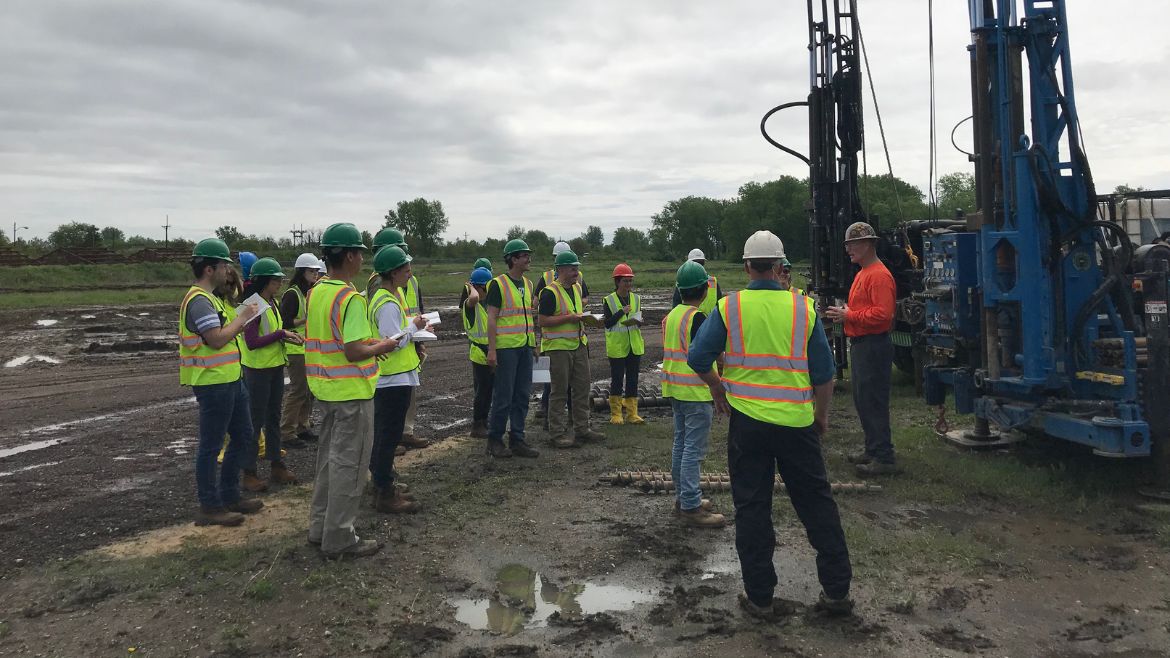 Credit: Brock Yordy
Credit: Brock YordyWater Conservation: A Shared Responsibility
Water conservation is not just an issue for policymakers and industry professionals; it's a responsibility that falls on all of us. As global water demand continues to rise and regions around the world face unprecedented water stress, both individuals and communities must adopt strategies aimed at reducing water usage. The path to a more water-secure future is paved with education, awareness, and the collective adoption of water-saving behaviors.
The drilling industry plays a pivotal role in water conservation, with opportunities to implement sustainable practices at every level, from field operations to office management. Here are tailored strategies for industry professionals to minimize water usage and promote conservation:
Sustainable Drilling Practices
Optimize water use in drilling operations: Employ advanced drilling techniques that require less water and recycle drilling fluids whenever possible.
Implement water management plans: Develop comprehensive water management strategies for projects, focusing on the efficient use of water resources and the reduction of waste.
Adopt precision drilling technologies: Utilize precision drilling methods that target resources more accurately, reducing the water needed for drilling and extraction processes.
Company-Level Initiatives
Invest in water-efficient equipment: Upgrade to high-efficiency water systems for cooling and lubrication processes in drilling operations.
Conduct regular water audits: Regularly assess water usage and identify areas where conservation measures can be implemented or improved.
Train employees on water conservation: Offer training sessions to educate employees about the importance of water conservation and practical steps they can take to reduce water usage in their daily tasks.
Research and Development
Invest in R&D for water-saving technologies: Support the development of innovative drilling technologies that minimize water use and explore alternative water sources for drilling operations.
Collaborate on water conservation projects: Work with government agencies, non-profit organizations, and other industry players to develop and implement large-scale water conservation initiatives.
Administrative Practices
Promote a culture of conservation: Encourage conservation efforts in office environments, such as reducing water use in landscaping and promoting the use of water-efficient appliances and fixtures.
Engage in policy advocacy: Participate in discussions and advocacy efforts for policies that support sustainable water use in the drilling industry and beyond.
By adopting these strategies, the drilling industry can significantly contribute to global water conservation efforts, ensuring the sustainable use of precious water resources while maintaining operational efficiency.
Community-Level Strategies
Communities can amplify the impact of individual actions through collective efforts:
Public education campaigns: Awareness initiatives can teach community members about the importance of water conservation and how to implement it in daily life.
Incentive programs: Local governments can offer rebates for residents who install water-efficient appliances or xeriscape their gardens with drought-resistant plants.
Infrastructure improvements: Investing in modern, leak-free water delivery systems can significantly reduce water loss.
Community-based projects: Rain gardens, green roofs, and permeable pavements can help manage stormwater and reduce the need for irrigation.
The Role of Education and Awareness
Knowledge is the cornerstone of change. Schools and community centers play a crucial role in fostering a culture of conservation by integrating water conservation education into their curricula and programs. Educational programs should emphasize the interconnectedness of water with other critical environmental issues, such as climate change and biodiversity, to illustrate the broader impacts of water conservation efforts.
Educational initiatives can also highlight case studies of successful water conservation projects, providing tangible examples of how communities have effectively reduced their water footprint. By showcasing the benefits of conservation, from reduced utility bills to enhanced local ecosystems, these stories can inspire individuals and communities to take action.
 Credit: Getty Images
Credit: Getty ImagesInternational Cooperation in Water Management
When water scarcity poses a significant challenge to sustainable development, international cooperation in water management is not just beneficial—it's imperative. The complexity of water issues, transcending national borders, calls for collaborative efforts to ensure equitable and sustainable utilization of shared water resources. Here, we explore notable examples of cross-border water management agreements and the vital role of international organizations in fostering global water cooperation.
Cross-Border Water Management Agreements
The Indus Waters Treaty between India and Pakistan (1960): This treaty, brokered by the World Bank, allocates the use of the Indus River and its tributaries between these two countries. It remains one of the most successful examples of international water-sharing agreements despite tensions.
The Nile Basin Initiative (NBI): Established in 1999, the NBI is a partnership among the Nile riparian states that seeks to develop the river cooperatively, share substantial socioeconomic benefits, and promote regional peace and security.
The Colorado River Compact (1922): This agreement among seven U.S. states in the Colorado River basin governs the allocation of the river's water. It's a pioneering example of interstate water management that has inspired similar agreements worldwide.
Role of International Organizations
The United Nations (UN): Through entities like UNESCO's International Hydrological Programme (IHP) and the UN Water Convention, the UN plays a crucial role in setting global water management standards, facilitating knowledge exchange, and promoting policies for sustainable water use.
The World Bank: It provides technical and financial support for water resource management projects worldwide, aiming to improve access to clean water and sanitation, enhance water productivity, and reduce the risk of conflicts over water.
The Global Water Partnership (GWP): An international network created to foster integrated water resources management (IWRM), the GWP supports countries in developing and implementing their IWRM strategies and facilitates cross-border cooperation on shared water systems.
The International Joint Commission (IJC): Established by the Boundary Waters Treaty between the United States and Canada, the IJC prevents and resolves disputes over waters shared by the two countries, demonstrating the potential for amicable bilateral water resource management.
The Path Forward
The road to effective international water management is fraught with challenges, including political tensions, economic disparities, and the growing threat of climate change. However, the examples above highlight the potential for successful cooperation through legal frameworks, shared governance mechanisms, and the active involvement of international organizations. As water stress intensifies globally, the imperative for further international collaboration in water management will only grow. Strengthening existing agreements, fostering new partnerships, and leveraging the expertise of global institutions are critical steps toward a water-secure future for all nations.
 Credit: Getty Images
Credit: Getty ImagesLooking Ahead: Policy Recommendations and the Role We Play
With all of the statistics above, the imperative for comprehensive policy reform and industry engagement has never been clearer. Below, we explore strategic policy recommendations, underscore the vital role of global agreements, and delineate how the drilling industry can actively contribute to the sustainable management of water resources.
Policy Recommendations for Water Sustainability
Integrated Water Resource Management (IWRM): Governments should adopt and enforce IWRM principles that emphasize the coordinated development and management of water, land, and related resources to maximize economic and social welfare equitably without compromising the sustainability of vital ecosystems.
Strengthening Water Use Efficiency: Policies should aim at improving water use efficiency across all sectors, particularly agriculture, which accounts for a significant portion of global water use. Incentivizing modern irrigation techniques and the use of drought-resistant crop varieties can play a critical role.
Enhancing Water Quality Regulation: Strengthening regulations on industrial discharges and agricultural runoff to protect water quality is crucial. Implementing stringent standards and promoting cleaner production processes can reduce the pollution load on freshwater resources.
The Importance of Global Agreements on Water Usage and Conservation
Fostering International Collaboration: Water scarcity is a global issue that transcends borders. International agreements can facilitate shared management of transboundary water resources, encouraging cooperation over competition and conflict.
Promoting Sustainable Development Goals (SDGs): Global agreements should align with the SDGs, particularly Goal 6, which aims to ensure the availability and sustainable management of water and sanitation for all. These agreements can provide a framework for countries to harmonize their efforts toward water sustainability.
Knowledge Exchange and Capacity Building: International cooperation can enhance knowledge sharing on best practices and technologies for water conservation. It can also help in building the capacities of developing nations to manage their water resources more effectively.
Drilling Industry's Role in Water Conservation
Adopting Sustainable Drilling Practices: The drilling industry must embrace and implement sustainable practices that minimize water usage and contamination. Techniques such as managed pressure drilling and using non-toxic drilling fluids can significantly reduce the environmental impact.
Innovative Groundwater Management: As experts in accessing groundwater, drilling professionals can lead in the sustainable extraction and replenishment of aquifers. Advanced monitoring technologies can help assess aquifer health and guide responsible water extraction.
Collaboration in Water-Efficient Technologies: The industry should collaborate with researchers and policymakers to develop and deploy water-efficient drilling technologies. Innovations in recycling and reusing water in drilling operations can drastically reduce freshwater consumption.
Advocacy and Public Engagement: The drilling industry has a voice that can influence policy and public perception. By advocating for water conservation measures and engaging in public education campaigns, the industry can contribute to a broader cultural shift towards valuing and preserving water resources.
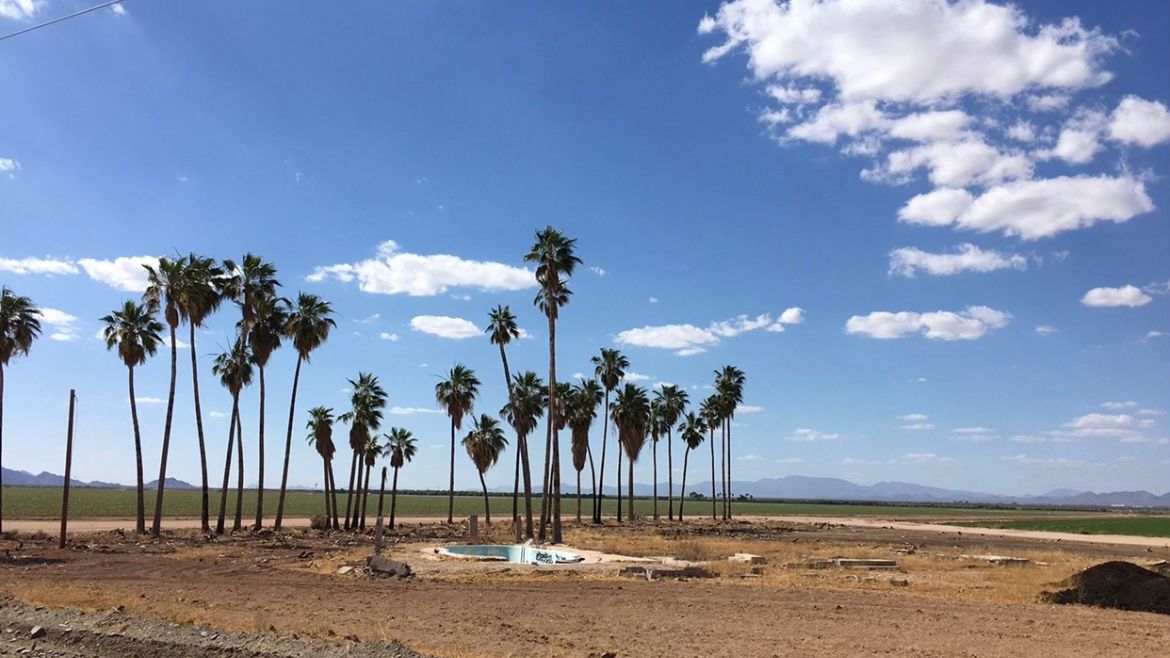
Drilling Ahead and Rising Above the Waters
The global water crisis looms large over the future of our planet, threatening not just our environment but our very way of life. As populations grow and climate patterns shift, the demand for water steadily increases, pushing our most precious resource to the brink of exhaustion. This crisis isn't confined to any single region or community; it's a challenge that calls for a unified response from every corner of the globe. The drilling industry, alongside governments and individuals, stands at the forefront of this battle, wielding the tools and expertise necessary to make a significant impact.
The urgency to address this crisis cannot be overstated. Regions once abundant with water now face severe shortages, transforming lush landscapes into arid wastelands. These changes not only affect the natural world but also fuel conflicts, displace populations, and threaten global food supplies. The stakes are high, and the time to act is now. This calls for a concerted effort to innovate, collaborate, and implement sustainable solutions that ensure a water-secure future for all.
The drilling industry, with its deep understanding of the earth's subsurface and mastery over extracting its hidden resources, is uniquely positioned to lead the way in sustainable water management. By adopting advanced technologies and practices that minimize environmental impact and maximize water conservation, the industry can set a new standard for responsible resource management. Governments, on their part, must create policies that support sustainable water use, encourage research and development, and foster international cooperation on water-related issues. In the face of this challenge, The Driller commits to being more than a witness; we strive to be a catalyst for change within the drilling industry. Through our platform, we aim to share knowledge, highlight innovation, and foster a community where ideas and solutions for sustainable water management can flourish. We invite professionals across the drilling industry to engage with us, share their experiences, and contribute to a growing repository of knowledge that can empower our community and beyond. By spotlighting success stories, emerging technologies, and best practices, we aim to inspire action and collaboration at all levels of the industry. Together, we can leverage our collective expertise to not only navigate this crisis but to emerge as leaders in securing a sustainable future for water.
Individuals also play a critical role in this collective effort. Through conscious consumption, advocacy, and support for sustainable practices, we can all contribute to the preservation of our water resources. Education and awareness are key to empowering communities to make informed decisions that promote water sustainability.
As we stand on the precipice of a global water crisis, the drilling industry's response could very well determine the course of our water-secure future. This crisis is not merely about water scarcity but about the very essence of our survival and the legacy we leave for future generations. The time for action is now, with every drill, every drop, and every decision playing a part in the narrative of our planet's water story.
Looking for a reprint of this article?
From high-res PDFs to custom plaques, order your copy today!






